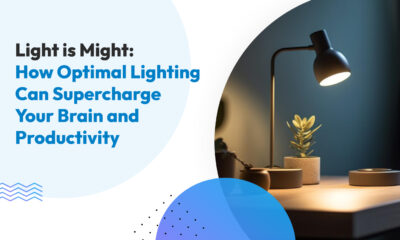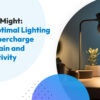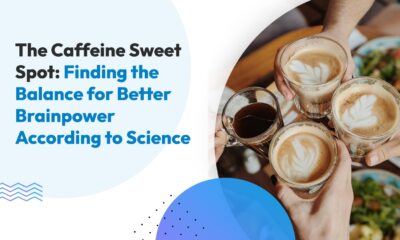Science Says
Recharge Your Brain in a Flash: The 5-Minute Indoor Nature Fix
When we start to feel burned out and overwhelmed, we often think of getting away on a grand vacation. But what if we told you you don’t have to go to a beach thousands of miles away to decompress and feel rejuvenated? This recent study conducted in Korea explores how nature, even in indoor spaces, can help us relax and focus.
Little slices of nature indoors might be the accessible solution you’ve been looking for to help you recover from the mental fatigue of demanding work (and personal!) schedules. Read on to find out the results of the experiment and actionable takeaways that can help you start your own mini staycations right inside your office or home.
The natural environment is widely believed to reduce mental fatigue and restore attention
This is probably not the first time you’ve heard that nature has restorative effects. Maybe you already have your own nature-focused routines like taking walks in a park or working in your garden to help you relax and clear your mind. But why is it that spending time in a natural environment has this effect on us?
According to the Attention Restoration Theory (ART), our capacity for directed attention – the focused concentration we use for everyday tasks – is limited and can get drained from overuse in today’s busy world. The theory suggests that exposure to nature helps restore this depleted attentional resource. How? Through these four aspects of natural environments that help reduce mental fatigue and renew our attention:
- Fascination: capturing our interest effortlessly, so we can take a break from the efforts of directed attention.
- Being Away: providing a psychological and physical escape or break from routine.
- Extent: having vastness and scale that invites exploration, as well as being a unified and organized space.
- Compatibility: aligning with our inclinations, interests, expectations or goals.
These factors may very well be found in man-made structures or spaces as well, but many studies support the idea that natural settings provide these restorative components to a greater degree than built environments.
Action Item: Can you build in nature breaks throughout the week? Instead of picking up your phone or switching on Netflix, how about a walk in a nearby park with lots of trees or a wide expanse of green? Think of other natural environments where fascination, escape, extent, and compatibility are high for you, and make them part of your recharging routine.

Does ‘indoor nature’ have the same restorative effect?
Now we did talk about mini staycations – but can we really reap the benefits of a ‘nature getaway’ within the confines of home or where we work? For this study, researchers devised an experiment to test 1) feelings of restoration and 2) cognitive improvement upon exposure to different types of indoor environments at the Seoul Botanic Park.
Thirty participants were shown three different indoor settings: one with no nature (a meeting room), one with some plants (cafe with indoor garden), and one with a lot of plants and a view of the sky (semi-indoor greenhouse). They spent five minutes in each setting. After viewing each setting, they rated how relaxing the experience was. Then, they completed a memory task while their brain activity was recorded using an EEG.
Participants reported significantly higher restorative effects in indoor nature – whether a pocket garden inside a cafe or a semi-indoor greenhouse, compared to the meeting room. [We will talk about the effect on cognitive performance in the next section.]
Action Item: Can you create your own indoor nature getaway? A space at home or at work with plants arranged in an aesthetically pleasing way? Maybe try setting up a recovery nook where you can take a break to enjoy the beauty of an indoor garden.
Impact on brainwaves and working memory is mixed
Feeling relaxed is one aspect of the experiment, but the researchers also wanted to test if cognitive performance improved from indoor nature exposure. They tracked brain waves in the three indoor settings before and after subjecting the participants to a backward digit span task – a memory task that required them to recall sequences of numbers backward. They also assessed how well the participants performed in the memory test in the different settings.
The brainwave patterns measured when participants were simply resting and not engaged in any particular task showed positive changes in the presence of indoor nature settings compared to the setting without nature. These changes in brainwave patterns are typically associated with being more attentive and focused, as well as experiencing lower mental strain and stress levels. During the memory task, the EEG recordings showed one specific brainwave pattern associated with better cognitive performance significantly improved in the environments with natural elements.
But how did participants perform in the memory test? Researchers found no statistically significant differences in how well participants did in this backward digit span task, whether in the meeting room, or in the cafe or greenhouse. At least in this experiment, the five-minute exposure to indoor nature didn’t improve cognitive performance.
So, when it comes to cognitive performance, the results of this study are mixed. On one hand, memory test accuracy wasn’t much better when participants were situated in indoor nature settings versus in the plain meeting room. On the other hand, some of the brain waves associated with focus, attention and relaxed mental states were found to be significantly higher in the indoor nature settings.
Action Item: While resting and working in indoor nature settings might not necessarily make you sharper and more focused, it appears that you can at least achieve a more relaxed mental state and lower mental stress. Delivering a similar performance in a working memory task but under a more relaxed state may already be a win!
Try conducting your own experiments to test this. Try doing the tasks you don’t particularly like in a space where there is a bit of nature. Use objective measures such as task completion time or accuracy, to assess the impact of indoor nature exposure on your productivity and focus. Additionally, track subjective factors, such as mood and stress levels, to assess if working in indoor nature provides a net benefit to your performance by making you feel better about the task at hand. Remember, it’s not always about whether or not you can do something better or faster, sometimes just doing it with less mental strain is a huge win and saves bandwidth for other things.
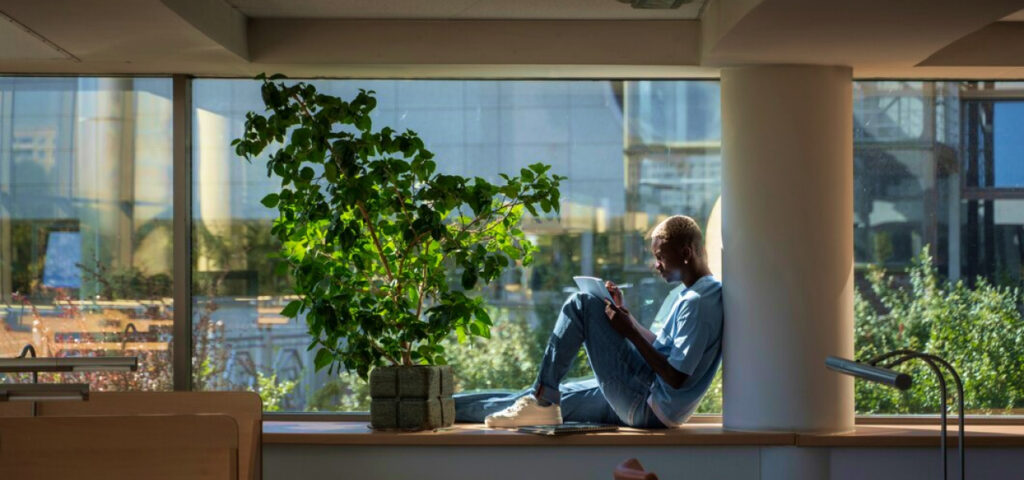
More green, sky, and order in the space = more restorative benefit?
Focusing on the relaxing effects of exposure to nature, we find a few more interesting observations from the study.
The semi-indoor greenhouse environment seemed to offer the most restorative benefits based on the survey, likely due to the higher amount of vegetation and the open view. Previous studies have cited this ‘density of nature,’ as in more plant life and a view of the sky as providing a more relaxing effect. This makes sense with regard to the Attention Restoration Theory (ART) which highlights scale, fascination and that sense of escape that a wider view of nature, compared to a pocket garden for example, can provide.
However, on the same restorativeness self-assessment, participants scored the function room higher in one component of the scale – coherence. So while a natural environment generally may dominate in the restorativeness scale because of fascination, the sense of escape, and even compatibility, our minds still tend to look for order, organization, and cohesiveness in a space.
In fact, in a different experiment where participants were shown dense nature like a forest scene and more spacious one like an open field, they reported lower anxiety for scenes where there were man-made elements like a hiking path. So pure, wild nature, without a sense of order and control, could be less relaxing for some than one that has been tended and improved.
Action Item: How do we translate these findings to create an indoor nature getaway? Of course, in this setting, we wouldn’t have access to expansive greenery and views of the sky. But you can increase the restorative value of your indoor slice of nature by making sure it is tidy and organized.
And even if you don’t have the ability to bring in natural greenery to your indoor space, you can control the ‘coherence’ of your home or office. Keep these spaces organized and easy on the eyes to benefit from that restorative effect of coherence.
Even videos, images, and virtual reality have found similar results to actual outdoor nature exposure or indoor nature exposure
This was not directly investigated in the study, but the researchers cited numerous previous papers where participants benefited from the relaxing effects of nature even without being face-to-face or immersed in real-life nature settings, regardless of whether indoor or outdoor. Many experiments have been conducted by showing participants nature images, videos, or using virtual reality, and these have yielded similar results in terms of creating feelings of relaxation in participants.
Action Item: This makes the healing effects of nature even more accessible. So scrolling through your vacation pics and videos may be a legitimate break for your mind. Cast the images or videos to a large TV screen to enjoy the full effect! Or even consider a picture frame for your desk that rotates your favorite restorative images.
How long does nature exposure have to be to benefit from the experience?
In this study, participants were exposed to each indoor environment for only five minutes. Despite this relatively short exposure, the results showed perceived restorative benefits. The researchers also cited that, “In a comprehensive meta-analysis investigating the optimal duration of nature-based activities for mental health benefits, engaging in nature-related activities for a minimum of five minutes mostly yielded positive psychological outcomes.” Previous research found measurable benefits from even briefer exposures of 40 seconds to four minutes of viewing nature scenes.
While this study doesn’t directly investigate or provide a clear conclusion on the optimal duration of nature exposure, these findings (including that of previous research) point to how useful nature micro-breaks can potentially be.
Action Item: Schedule five minutes in front of your indoor garden, or viewing videos of expansive outdoor nature scenery and see if you benefit from a feeling of relaxation and rejuvenation. Bringing nature indoors, or even in virtual format, and a very short period of exposure could truly mean a mini staycation for the mind. One of my favorite tricks is using my Peloton treadmill and taking a nature walk (my favorite one is in Japan!) combining movement and nature even when I can’t get out. Even if you don’t have a Peloton subscription (they do have an app-only option without the equipment), YouTube has lots of options!
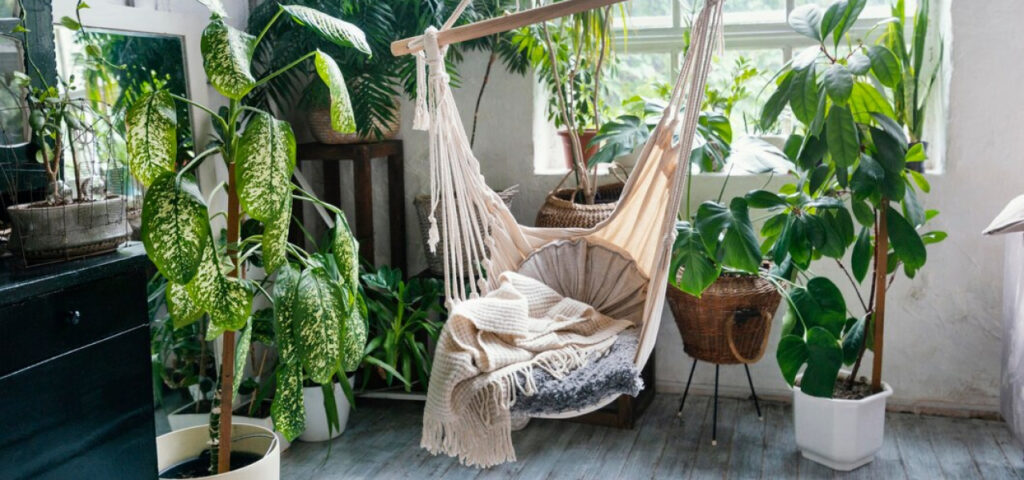
Limitations
While the findings of this study are interesting, it’s important to note some key limitations. One major issue was the inability to fully control environmental conditions as the setting was a public park. Many factors like noise, temperature, and airflow across the three indoor sites can influence how restorative or mentally taxing an environment feels.
Another potential limitation was carry-over effects, as the experiment was conducted within one session and the participants had to move around the different settings within a period of roughly two hours. The impacts of one site may have affected how participants perceived and performed at subsequent sites. Longer breaks between exposures could have mitigated this.
The brief 5-minute exposures may also have been too short to detect measurable impacts on the cognitive performance test scores, even though perceived restorative benefits were found. The paper does mention existing research indicates the duration of exposure can impact the degree of restorative effects, with longer periods (50-55 minutes of nature walking, 2 months with plants in a classroom) showing clearer cognitive benefits like improved memory test scores.
Additionally, the study lacked baseline measures of each participant’s brain activity and cognitive performance before any exposure. This made it difficult to precisely quantify how much each setting caused deviations from personal baselines.
Despite offering more realism than lab studies, the limitations highlight the need for continued research with tighter experimental controls to optimize understanding of how different indoor nature exposures impact psychological restoration and cognition.
Wrap Up
There are a lot of possibilities to explore in implementing the findings of this study and other related research on the power of nature. Combining exercise with nature walks, extending exposure to green and sky from minutes to months, or incorporating nature right in your workspace are some ideas you can test out to potentially supercharge the healing effect of the natural world on your mental and emotional well-being.
But you can start small as there are practically no barriers to testing out the mini staycations with indoor nature. Indoor greenery or nature scenes (and even virtual ones) with just five minutes of exposure might just be the minimum effective dose to help your mind relax and recover from the mental load of day-to-day busyness. These five minutes may not immediately translate to sharper memory or significant improvement in your cognitive abilities, but there is a psychological benefit that could give you more energy to get back to work and finish the next task with less stress and in a more relaxed state.





